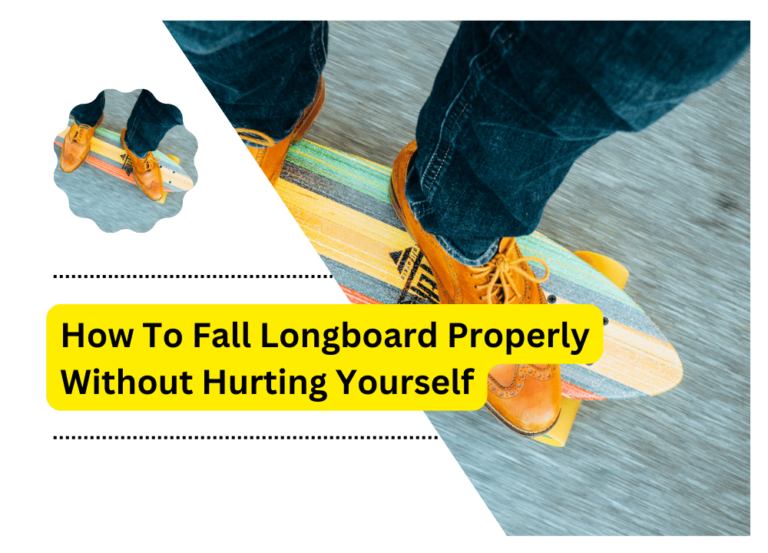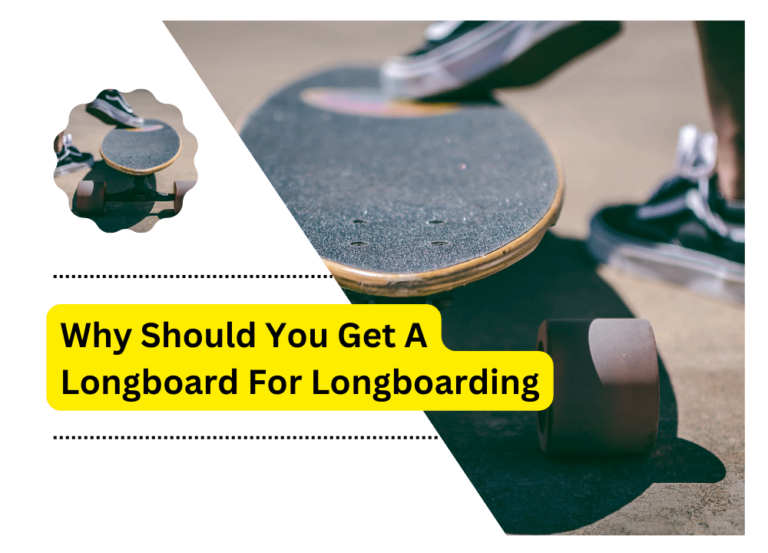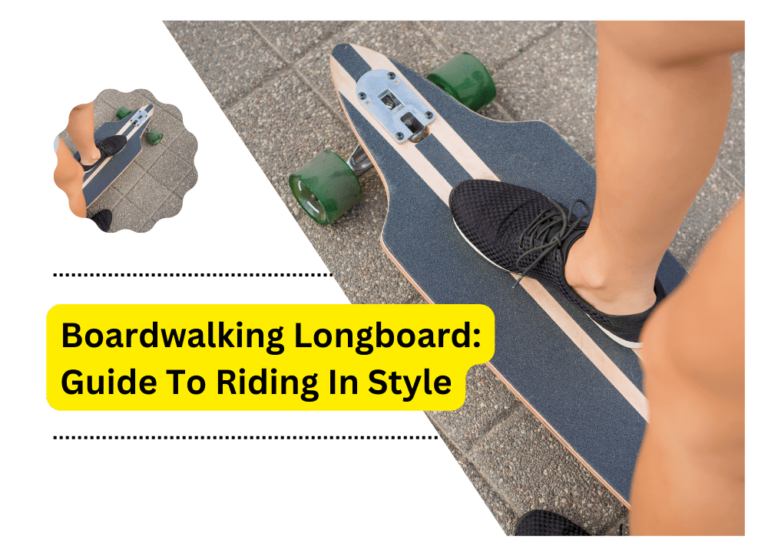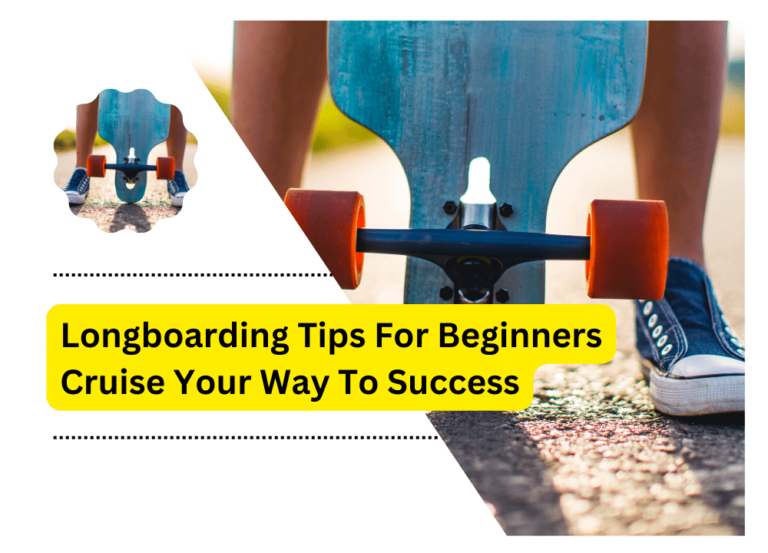How To Longboard Down A Steep Hill – Quick 7-Step Guide
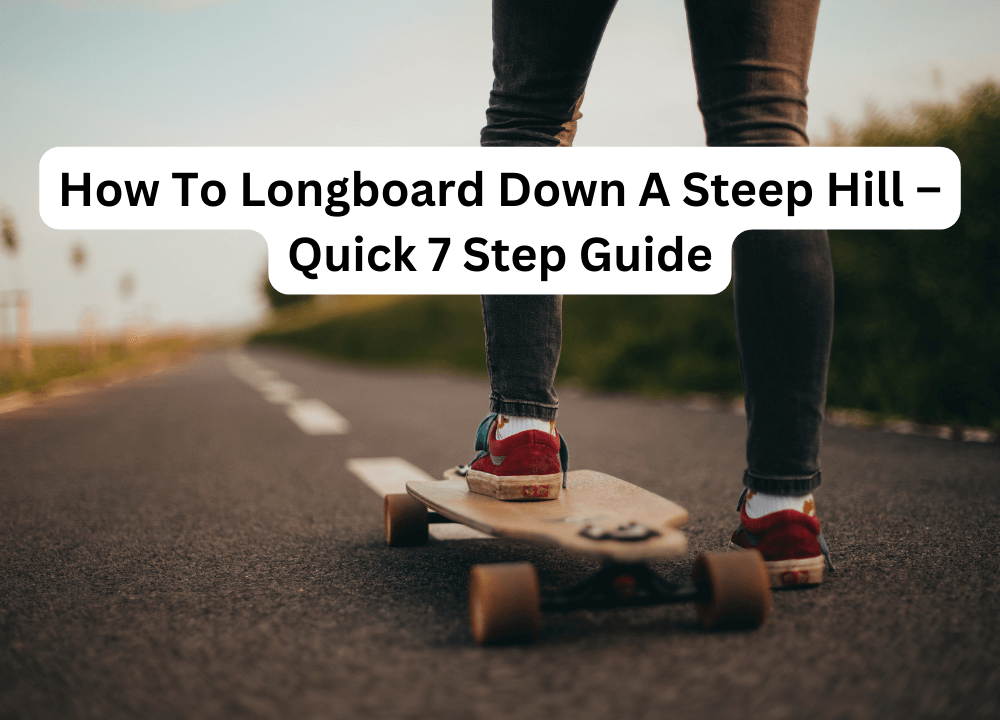
Longboarding down a steep hill can be an exhilarating and challenging experience. However, taking the necessary precautions and knowing the proper techniques to stay safe is essential. Different elements define a downhill longboard; it has a strong deck type and its ratio, and downhill longboard trucks and wheels are correctly found.
Before attempting a downhill ride, you make sure that you understand how to slow down and stop correctly. And you should also know very well how to work on your longboard. Longboarding is dangerous, but riding the board downhill is even more difficult because it involves moving the speed back and forth and keeping it in the centre.
How to Longboard Down a Steep Hill
Remember, longboarding down a steep hill can be dangerous, and it’s essential to take it seriously. Always prioritise safety and know your limits. With the right equipment, techniques, and practice, you can enjoy a thrilling and safe longboarding experience. You should polish your techniques and skills before becoming the fastest downhill skateboarder. When you obtain your necessary equipment after researching, take the following advice to learn the fundamentals of downhill skating.
First, learn to stop.
Foot braking is the most popular and secure strategy. Remove your back foot from the board and slide it on the ground until you rest. Before you even start rolling, you need to know who to stop your longboard if you get into trouble on the way down. Various methods for performing this include footbrake, tailslide, and heel-slide.
- To tailslide, you need to be in a comfortable position on the board. Push down on the tail with your back foot so it drags along the ground.
- Lean forward to avoid the board slipping out. Most people are against this because it breaks up your board’s tail.
- Heel-sliding is an alternative to tail-sliding that does not damage your tail. It’s similar to a tailslide. However, your back foot’s heel dangles over the back of the bottom of the shoe.
- Front trucks should be looser than back trucks.
Wobbles begin in the back, so the front trucks should be looser than the back trucks. Make sure they are tight enough; otherwise, it will be challenging to carve/turn. It is the greatest thing to do because it will help to reduce wobbling while driving fast. As you gain confidence in your talents, you can relax your trucks.
Learn how to tuck downhill.
You shrink as much as possible in a specified position to achieve maximum speed. When you “tuck” onto your board, you reduce wind resistance and stabilize your body. You shape your body to reduce air resistance so you can function correctly.
Calm is necessary
While downhill riding, keep your body relaxed and loose. While being wise and safe is critical, you must also be confident to master the skill. If you are frightened, Your muscles can tighten due to nerves and panic, which can alter how your board handles. Stay relaxed and calm to improve your downhill skateboarding skills and avoid injury. High-speed downhill skating necessitates a certain amount of bravery.
Teach out how to fall.
Before bailing on a downhill run, try broad carves or foot braking, but if you’re going to lose control and don’t know how to save yourself, learning how to fall appropriately will help you avoid serious injury. Never use your hands to break your fall when traveling at high speeds, as this can cause significant harm to your hands and wrists.
Instead, you should know when to roll your chin like a duck and always find a soft spot to land.
Maintain Your Trucks’ Balance
Speed wobbles are caused when the back trucks are looser than the front ones. A shaky longboard is unstable and will most likely result in a wipe-out. You can easily avoid speed wobbles by ensuring that your front and back trucks are balanced or evenly fastened or by loosening the front trucks slightly more than the rear trucks. The best course of action is to keep them evenly flat.
Become adept at turning.
You will eventually need to make a turn if you are traveling along a straight line, which is doubtful. Turning at such high speeds may be both thrilling and risky. Your safety depends on your ability to ride safely. With these two methods, you can have a safe ride.
- Foot stopping
- Pre-drifting
Pre-drifting is the practice of lightly drifting just before the turn. Your downhill longboard can slow down just enough to make the bend safely.
If you enter a turn too quickly, you are more likely to miss it entirely and crash. You will lose momentum and tumble off if you approach it too slowly.
Control your speed:
Use your body weight and foot positioning to control your speed. You can also use carving techniques to slow down by making a series of S-shaped turns.
You must have the ability to control the speed of your longboard.
Finally, the most crucial tip all experts follow is to be fearless. It is a dangerous sport. If you understand the fundamentals correctly, you must believe in your ability and go for it.
Longboarding downhill can be a lot of fun, but it can also be deadly. These ideas can help you get by fine and safely tackle more significant, steeper climbs.
Safety Equipment for Downhill Longboarding
When participating in extreme sports, having the proper safety gear to help minimize your risk of injury and give you the confidence to push yourself even further is essential. Some crucial protective equipment you will need to participate in downhill longboarding. Here’s a step-by-step guide on how to longboard down a steep hill:
- Avoid using it during the wet season – The board will absorb moisture and become soggy and damp, rendering it unsuitable.
- Longboards travel faster and with less effort than skateboards. To maintain this efficiency, service the wheels and clean the bearings.
- If you want to ride safely and enjoyably, wear a helmet, gloves, and full riding gear. If the speeds get too high, you can’t keep everything under control.
Moreover, always wear a helmet, gloves, elbow and knee pads, and closed-toe shoes to protect yourself from falls and injuries. This way, you can avoid many serious injuries That would have hurt you.
- Regular practice: Practise regularly to improve your skills and confidence. You can speed up and build intensity by gradually increasing your riding speed while staying within a range. Regular practice can make you a perfect downhill longboard.
- Keep an eye on Barriers: Always watch for other obstacles on the hill, such as pedestrians, cars, or riders. Always communicate with other riders by hand signals and give way to pedestrians so that pedestrians do not face any problems.
- Look for a hill with fewer people, less traffic, and a smoother surface. A mountain that does not have potholes and its surface is not too difficult. However, seeing the excellent hill to avoid an accident is very important.
- Begin slowly: Begin slowly and gradually increase your speed as you become more comfortable with the slope. Practice stopping and slowing down by dragging your foot across the ground or using the brake system on the board.
- Keep your weight centred: Bend your knees over the board with your feet and shoulders straight. Doing this will keep your weight precisely in the middle of your board. Avoid leaning too far forward or backward, as it can cause a loss of control.
- The best downhill longboard: Only some boards are appropriate for downhill longboarding. The one you select should have a deck that is not simply rigid but also stable. Your board should be concave to prevent your feet from sleeping.
- And the grip tape should be in good condition to provide the best possible grip. The vehicles should be able to handle the increased speed that you are likely to obtain. Although this is a personal preference, most downhill longboarders prefer riding on more comprehensive, longer decks because they are easier to control. They also like downhill longboards with a larger wheelbase, which provides more wheel bite and control when speeding downhill.
Remember, longboarding down a steep hill can be dangerous, and it’s essential to take it seriously. Always prioritise safety and know your limits. With the right equipment, techniques, and practice, you can enjoy a thrilling and safe longboarding experience. You should polish your techniques and skills before becoming the fastest downhill skateboarder. When you obtain your necessary equipment after researching, take the above advice to learn the fundamentals of downhill skating. The rider’s weight, the style of the skateboard, and even the terrain all affect how fast a skateboard can travel. However, with appropriate technique and preparation, anyone may safely enjoy flying down a hill on their skateboard.

